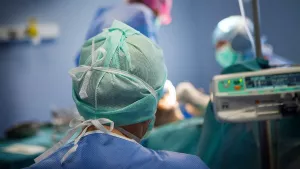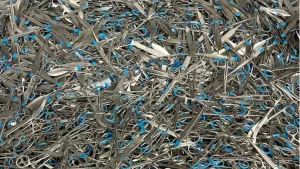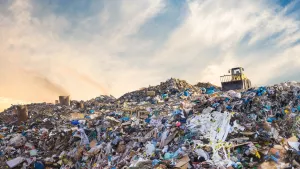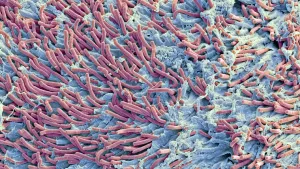Annoyed by how much waste you’re creating in the OR? Reduce!
Else de Ridder (Green Care Academy) · · 4 min readGreening waste created in the OR is most efficient when following the 3R-principle: reduce, reuse, recycle. In my previous blogpost, I listed some simple steps you can take to start with recycling. In order to decrease the footprint of your waste, there are two things that have an even bigger effect than recycling: reducing waste and reusing products.
In this blogpost, I explored waste reduction with Omayra Nooitgedagt, policy advisor sustainability at Medisch Centrum Leeuwarden.

Reduce, reuse, recycle
When healthcare personnel think about greening their waste, often the first thing they think about is recycling. Even though recycling is an excellent step you can take, in terms of lowering your CO2-footprint, there are two actions that are more effective: reduce and reuse. The most effective of these two is “reduce”, which means creating less waste by using less products (or different products). This has a very simple reason: products that don’t need to be manufactured, transported, and used, have no footprint at all! The most sustainable product is the product you don’t use.
Omayra: Reducing waste is a very emerging theme within sustainable healthcare. We are finding out how we can satisfy all stakeholders, while at the same time making this important step towards less waste.
How does this translate to healthcare?
We cannot simply stop using disposable products. We still need to take care of our patients. But we can optimise the products we use. Healthcare often makes use of pre-packed disposables: large packages, containing all sterile disposables needed for a certain procedure. By optimising these pre-packs, we can take out the products that are not absolutely necessary. This way, we reduce the amount of waste that is created.
Omayra: If we happen to have products from the pre-pack left after a procedure, we determine if we can use them for a different procedure. Some products within the pre-pack are packed individually as well. They are still sterile after the pre-pack has been opened. These products do not have to be thrown out, but can be used for another procedure. But of course, you would like to optimise the pre-pack, so you don’t have any products left after a procedure.
Inspect your pre-packs critically
By inspecting the content of your pre-packs critically, you can determine which products are actually necessary, and which ones are superfluous. I challenge you to do the same. Next time you open a pre-pack and use its contents, ask yourself: “Am I using all the products within the pre-pack in a useful way? Could I provide the same quality of care with less products?” I’ll bet there are some products within your pre-pack that you could do without. Are you for example using all the bowls in your surgical pre-pack? If the answer is no, it’s time to get in touch with the manufacturer of the pre-pack. You can contact someone from the hospital’s purchasing department to get in contact with them.
Omayra: Involving manufacturers is probably the most important step to optimise your pre-pack. They can explain to you what is possible. For some items within a pre-pack, such as the instructions for use, it is legally obligatory to include them. Your manufacturer will tell you for which items that’s the case.
If you want to start greening your operating room today, we've listed 10 concrete steps to make your operating room more sustainable.
Also, do you want to learn more about how to implement “reduce”? You can watch the webinar “reduce” with Dr. Redmer van Leeuwen, eye specialist at Utrecht University Medical Center, by buying your ticket here (in Dutch).
This blogpost was created in collaboration with Green Care Academy.







